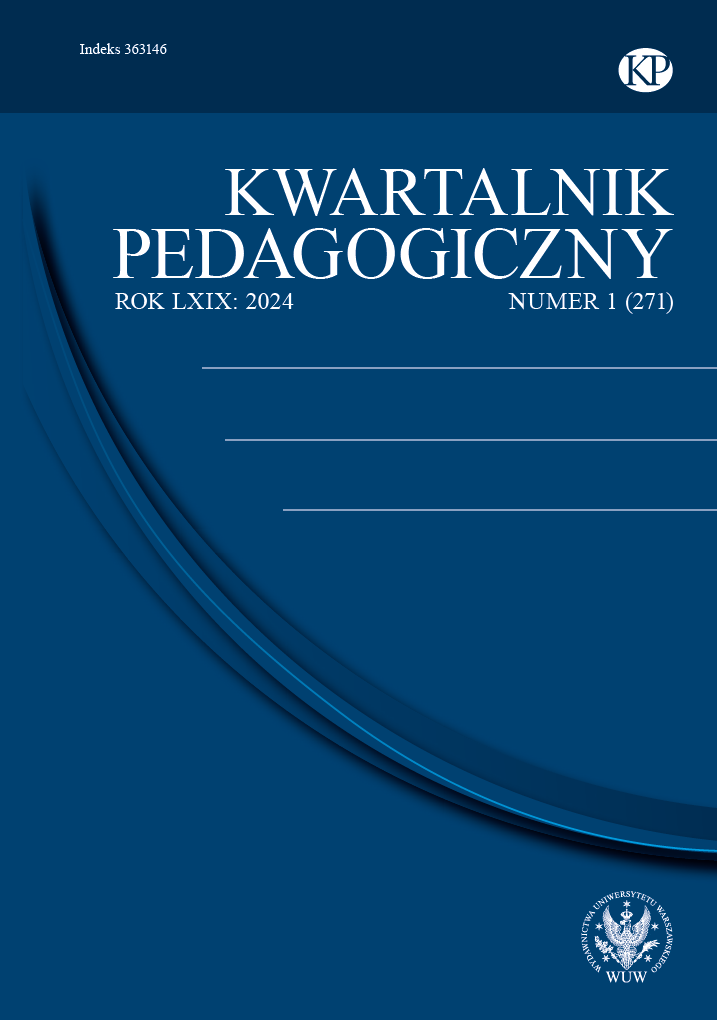Znaczenie otoczenia fizycznego dla rozwoju dzieci w wieku od 3 do 6 roku życia – badanie nad efektywnością
oddziaływania mebli edukacyjno-terapeutycznych
umieszczonych w salach przedszkolnych
The Importance of the Physical Environment for the Development of Children Aged 3 to 6. A Study on the Effectiveness of Educational and Therapeutic Furniture Placed in Preschool Rooms
Author(s): Kinga Misiniec, Anna Myrda, Marek Misiniec, Grzegorz StruzikiewiczSubject(s): Preschool education
Published by: Wydawnictwa Uniwersytetu Warszawskiego
Keywords: educational and therapeutic furniture; cognitive development; preschoolers; kindergarten rooms; experimental research
Summary/Abstract: Development is a result of interactions between biological conditions and the environment in which the developing child lives. The child must receive the right amount of stimuli I – not too much and not too little. Thanks to this, the child gains experience and successfully acquires sensorimotor and cognitive skills. Furniture is part of the physical environment that all young children come into contact with. The aim of the presented study was to check the extent to which furniture designed to support the development of preschool children actually fulfils this function. It was expected that children who would have systematic contact with therapeutic furniture would develop better than children staying in a space with standard furniture. 60 children aged 3 to 6 years participated in the study. Half of the children (two experimental groups of 15 children each) attended a kindergarten that received the designed furniture. These pieces of furniture were located in rooms where children spent time every day – preschoolers had frequent contact with them and could use them spontaneously during free play time. The control groups included children attending preschool with standard equipment. All children were tested twice with a standardised intelligence test (IDS-2, IDS-P, SB5) at a six-month interval. Cognitive function indicators were constructed based on the converted results and used in further analysis. The average values of indicators of the level of cognitive functions were compared in the experimental and control groups. Significant improvement in the functioning of the average child from the experimental group compared to the average child from the control group was noted in the areas of short-term auditory memory, short-term visual memory, conceptual reasoning, gross motor skills and IQ.
Journal: Kwartalnik Pedagogiczny
- Issue Year: 271/2024
- Issue No: 1
- Page Range: 95-115
- Page Count: 21
- Language: Polish
- Content File-PDF

